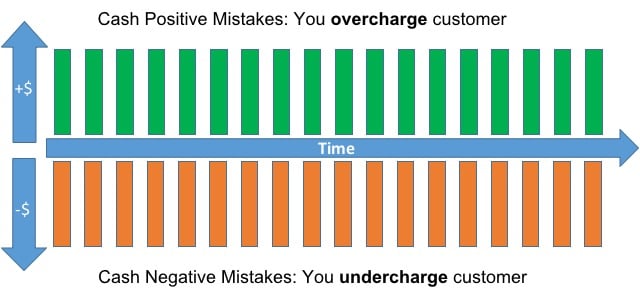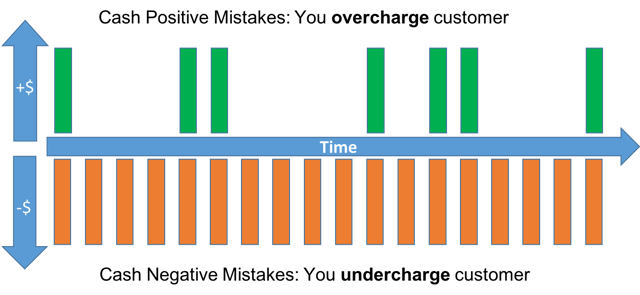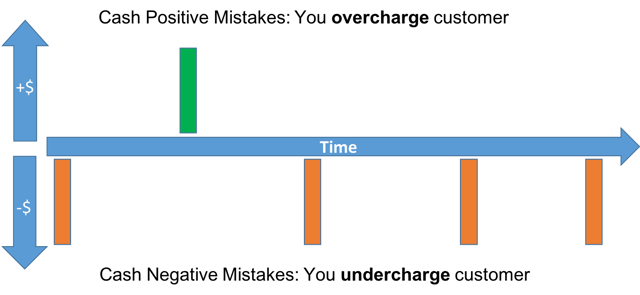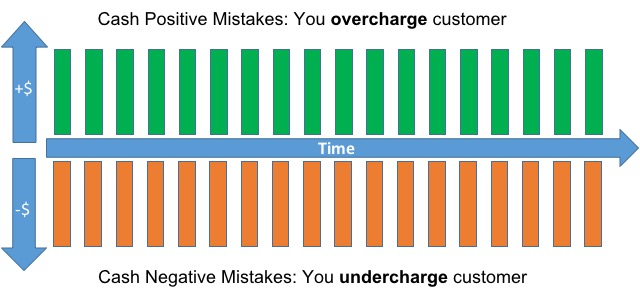About 2%-3% of all delivery/pickups have a mistake on them. (Mistakes are more common on pickups, but deliveries have mistakes too.)
Some mistakes will overcharge customers. Let’s call these ‘Cash Positive Mistakes.'
Some will undercharge customers. Let’s call these ‘Cash Negative Mistakes.'
Let’s assume that mistakes are split evenly between the two types. Here is a chart of what those mistakes would look like over time:

So far, the net effect isn’t much as they cancel each other out.
But in real-life, customers will catch some mistakes and, they are more likely to catch mistakes that overcharge them. Even when customers catch mistakes that undercharge them, they typically do not report them.
Combining these ideas, we will see that many of the Cash Positive Mistakes are undone. So, let’s remove most of those from the chart.

This is looking worse, but we’re not done yet… When a customer catches you overcharging them you need to credit them back money and account for your wasted time fixing the problem. Customer trust now comes in to play as well. So, let’s turn all of those removed Cash Positive Mistakes into Cash Negative Mistakes.

Ouch. I’m getting stressed just looking at this chart. This looks expensive. And, it’s hard on your people and strains your customer relationships.
The way out of this mess is to avoid the mistakes in the first place. If asset tracking can reduce your number of mistakes by 85% then you chart looks like this over the same time period:

Ok, that’s much better. Not perfect – but no organization is perfect.
Takeaway: Reducing mistakes is always a HUGE benefit. Mistakes on average are always bad.
Question: How many more months will you let these mistakes continue? You risk wearing your people and customers out. Let us help. Time is ticking by.
.png)



